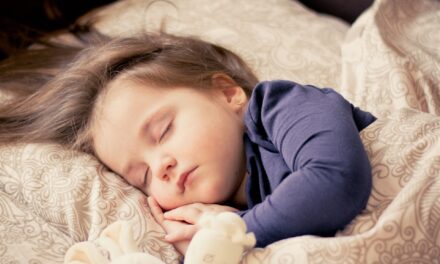In the medical community, adult night terrors are referred to as sleep terror disorder. The condition appears to be more common in some families than in others, indicating a genetic predisposition to the condition. Disordered arousal occurs during non-REM sleep and is characterised by extreme panic, screams, and movement.
It takes approximately 90 minutes after falling asleep for a person to experience an unexpected awakening from non-dreaming sleep. Screaming or shouting is frequently heard in conjunction with this action. It is also possible that symptoms of increased sympathetic activity will be present in some cases.
The person’s first signs of awakening include; being unresponsive, confused, and disoriented, as well as being unable to recall why they awoke in the first place. They might not be unable to communicate effectively due to the disorientation they may be experiencing and bedwetting might also be a problem during this time. They may strike out or throw things, and he or she may even try to flee the room. There is usually little or no memory of what has happened during that period of time.
What to expect from our article
Symptoms of night terrors
During an incident of night terrors you might experience the following;
- Sit up in your bed
- Scream or make a loud noise
- Carry out potentially hazardous actions
- Be difficult to wake up
- When you are awoken, you may be confused or disoriented
- have no recollection of what occurred
Night terrors are more common in children than they are in adults. Medical intervention is rarely necessary in most cases. When it comes to night terror events, it’s critical for parents to keep track of their child’s sleep-wake schedule, as well as the timing and characteristics of each event. This information can be extremely beneficial In determining the nature of the event and help develop a treatment plan if symptoms continue.
Night terror risk factors
Night terrors are more common in children than in adults, and both males and females are affected in the same percentages. An estimated 6.5 percent of all children are affected by this condition, according to estimates. children between the ages of three and eight years old are most commonly affected. The majority of the time, children who suffer from night terrors will talk and walk around in their dreams.
Occasionally, night terrors can emerge in early adulthood, it seems to affect approximately 2.2 percent of all adults with only a small percentage of people over the age of 65 suffering from night terrors. It has been shown that this condition has a strong genetic and familial component. making It possible for several members of the same family to be affected at the same time.
In addition to having a history, many adults who have night terrors are also likely to have:
- Bipolar disorder
- Depressive disorders
- Anxiety disorders
It is unclear how closely it may be linked to these mental disorders in adults, but the possibility exists. According to the results of the study, there is no connection between psychological problems in children and sleep terrors.
Episodes of sleep terrors and sleepwalking seem to have a lot in common in terms of their causes. The following are examples;
- Sleep deprivation
- Hyperthyroidism
- Migraine headaches
- Head injury
- Encephalitis
- Stroke
- The premenstrual period
- Stomach bloating
- Physical or emotional stress
- Sleep apnea
Other things that may affect sleep are;
- Travel and sleeping in unfamiliar surroundings
- Some medications
- Alcohol and drug addiction
- Noise or light within the sleeping environment
Sleep study
A sleep study, which is performed by a sleep specialist, may be required to examine your sleep. A sleep study, also known as polysomnography, is a recording of your brain waves, heart rate, and breathing while you sleep. It also monitors your arm and leg movements and records your actions on video while you sleep. If you get out of bed or do anything unexpected during your sleep study, this will help show it.
It is recommended that an adult who continues to have night terrors or who begins to have them be evaluated for the presence of other sleep disturbances. This is when you should consult with your doctor about obtaining a referral to a sleep specialist.
A sleep specialist will most likely ask you to keep a sleep diary for two weeks before diagnosing you with a sleep disorder. As a result, they will have a better understanding of what may be causing your symptoms. In addition, he or she may ask you to complete a brief questionnaire to determine the quality of your sleep. This will assist you in demonstrating how your sleep is interfering with your daily activities.
The specialist will need to know everything about your medical history to properly diagnose you. It is important to inform them of any medications you may be taking. In addition, you should tell your doctor if you or a member of your family has ever suffered from a sleep disorder.
During the examination, sleep specialists will try to determine if there is anything else causing your night terrors or making the symptoms worse, such as;
- An additional sleep disorder
- An illness that requires medical treatment
- Use of medication
- A psychiatric disorder, such as post-traumatic stress disorder (PTSD),
- Drug or alcohol addiction
How to manage night terrors
If you or your child suffers from night terrors, here are some strategies that may help.
Getting adequate sleep
Make sure you get enough sleep, night terrors can be exacerbated by exhaustion. If you’re suffering from sleep deprivation, try setting your bedtime earlier and maintaining a regular sleep routine. A short nap might even be beneficial in some cases. Noise levels or other stressors that could disrupt sleep should be avoided when possible.
Create a relaxing environment
Set yourself tasks that will help you relax. Before going to bed, engage in quiet and calming activities, like reading a book, doing a jigsaw puzzle, or having a soak in a warm bath. Meditation and relaxation exercises may also be beneficial but most importantly make sure your bedroom is a comfortable and peaceful place to sleep.
Create a safe space
Make sure your sleeping environment is as safe as possible. Before going to bed, close and lock all windows and exterior doors to help prevent injury. You might even consider locking interior doors or installing an alarm that will be triggered if it is opened. Secure doorways and stairs with a gate, and move or put away any objects that could cause a tripping hazard. Make sure that any jagged or pointy objects are out of reach, and that all sharp knives are securely locked away.
Deal with stress
Recognize the things that are causing you stress and identify solutions to help deal with that stress. If your child appears agitated or stressed, talk to him or her about what is causing them to feel this way. Encourage them to write down their feelings as a way to remove any internal stress.
Stay calm and offer comfort
Try to provide comfort If your child is experiencing a night terror episode, this may be difficult at times, often you may just have to wait it out and offer comfort when they come around a little. Night terrors might be upsetting to see, but it will have no negative impact on your child once they are awake. Hug and slowly calm your child until they fall back to sleep. Speak in a soft and calm tone. do not shake or shout at your child as it might make the situation worse.











